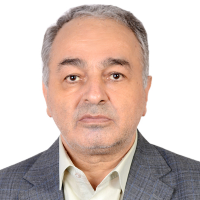Application of TOPSIS Method in the Investigation of River Water Quality (Case Study: Aji Chai River)
The study of surface water quality control in water resources and environment management programs is very important. Surface water is one of the most important water sources that have crucial impact on agricultural, industrial, drinking and electricity production activities. Due to insufficient water sources with good quality and the increase in population growth rate and as a result of the increase in demand, the study of water quality parameters is very important. The Water Quality Index (WQI) serves as a prominent indicator in classifying surface water quality. Moreover, in recent years, the TOPSIS method has gained traction for evaluating water quality. This approach, known for its simplicity, is increasingly utilized in prioritizing river water and assessing its quality. Through this index, various components of water quality are condensed into a single numerical value, effectively expressing overall water quality. To ascertain the weight index, Shannon's entropy method was employed. Furthermore, to assess water suitability for drinking, agriculture, and industrial purposes, Schuler, Wilcox, and Piper diagrams were utilized. These diagrams provide valuable insights into the quality of water, aiding in decision-making processes regarding its utilization across different sectors. Therefore, the results of this study also confirmed the effectiveness of the TOPSIS method in identifying contaminated stations.
This research focuses on evaluating the water quality of three stations within the Aji Chai river watershed on an annual basis. These stations are identified as Arzanag, Akhola, and Markid. The assessment spans the years 2003 to 2021 and aims to classify water quality for both drinking and agricultural purposes. Utilizing the standards set forth by the World Health Organization, the surface water quality index of the Aji Chai basin is investigated to ascertain its suitability for drinking purposes. Shannon's entropy theory was used to prevent expert judgments in determining the weight of each parameter. TOPSIS method was used to classify eleven qualities including TDS, EC, pH, HCO3-, Cl-, , Ca2+, Mg2+, Na+ , K+ and TH. In all the three stations water quality were ranked, based on TOPSIS numerical values. Also, in order to check the quality of drinking, agricultural and industrial water, Schuler, Wilcox and Piper diagrams were used.
The initial findings from the %RE error analysis revealed that throughout the entire statistical period (2003-2021), the %RE values were consistently close to zero, with the majority being positive. This suggests that the total number of cations surpasses the total number. In terms of the Shannon water quality index, the results indicate that Markid station exhibited the highest index value at 945.92, while Arzanag station displayed the lowest value at 127.365 among the surveyed stations. The results of the water quality index showed that Arzanag and Akhola stations are in an average condition (100 < EWQI < 150) and Markid station is in a very poor condition (EWQI > 200). According to Schuler's diagram, it was found that the water of Arzanag station is in the average level in terms of water quality, which is in a good position in terms of quality compared to the other two stations, while the water of Akhola station is in a good position. In the range of poor quality, Markid water was undrinkable, which ranked worst among the three stations. According to the Wilcox diagram, it was found that the water quality of Markid is very poor, which is even outside the boundary of the Wilcox diagram, while the water of Arzanag station was ranked 1st in terms of quality. Arzanag water is in C4S2 class in terms of quality. Finally, the water class of Akhola station was placed in the C4S4 class (in the Wilcox chart), which shows very low water quality. According to the TOPSIS method, the first priority in terms of water quality pollution belonged to Markid station. Two other stations, including Akhola and Arzanag, were ranked second and third in this respect. Therefore, the most important station in this basin is Markid station.
The results of Shannon water quality index showed that among the stations, the highest index value is related to Markid station with a value of 945.92 and the lowest one is related to Arzanag station with a value of 127.365. According to Schoeller diagram, it was found that the water quality of Arzanag station is average, compared to the other two stations, it was in the right place and the water of Akhola station was in the range of poor quality. The quality of Markid water was found to be undrinkable, which was the worst one among all the three stations. The range of TOPSIS values in different stations is between 0.054 and 0.894, which belonged to the Arzanag and Markid stations, respective ly. According to the results of the Arzanag station, the best water quality condition and the Markid station were assigned the worst water quality condition among all the three stations.
- حق عضویت دریافتی صرف حمایت از نشریات عضو و نگهداری، تکمیل و توسعه مگیران میشود.
- پرداخت حق اشتراک و دانلود مقالات اجازه بازنشر آن در سایر رسانههای چاپی و دیجیتال را به کاربر نمیدهد.



